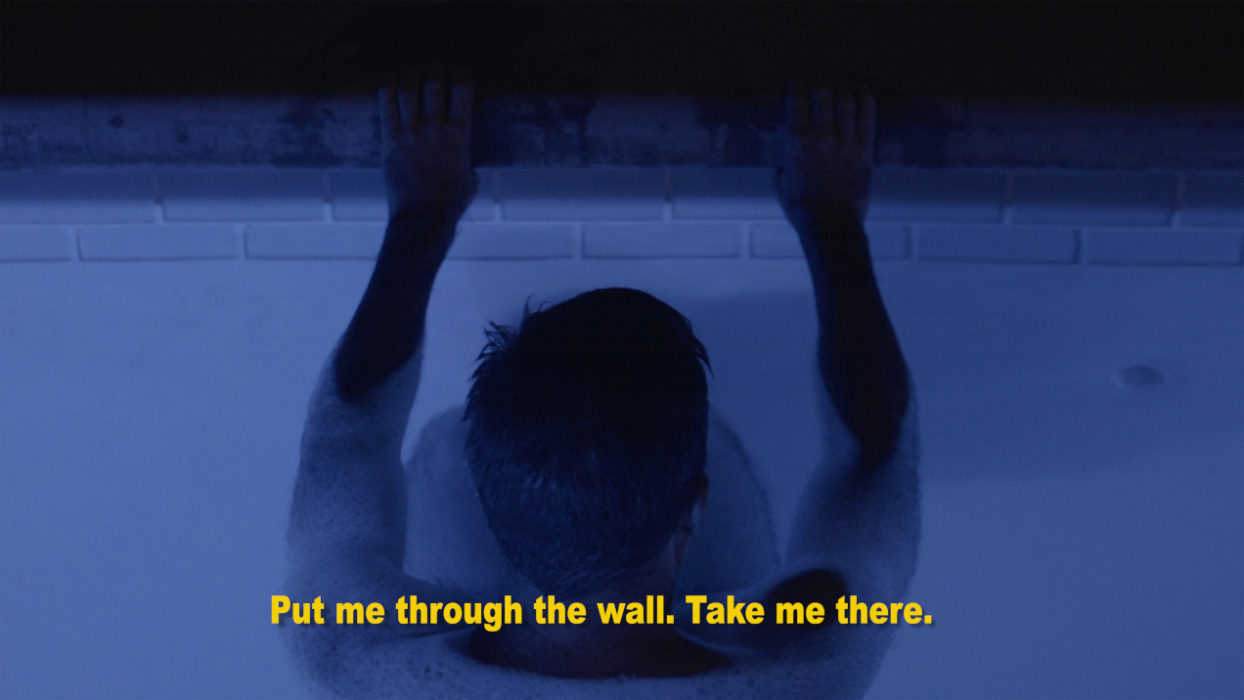Polycephaly in D
An exploration of the existential drift, collective trauma, and psychological free-fall of the contemporary moment. Leaping, falling, and meeting your new self in an earthquake; we lose one head so as to grow another.
In English, it is said that violent emotions rip the earth apart. In French, that they disrupt, like a stone hurtling down a slope. As willpower alone cannot stop them, they need to be played out again to halt and reverse the curse. The new film from American filmmaker Michael Robinson espouses the shape of these upheavals. Two men are communicating telepathically. Two former lovers, or perhaps the bodies of just one disassociated man. Gravity nails the first to the ground of a Californian desert, the second floats in the shimmering blue of a Los Angeles swimming pool. A dialogue of subtitles re-establishes a broken communication. When one of them asks to cross through the wall separating them, a landslide ensues. As always, Robinson draws on images borrowed from cinema, television and the Internet, patiently collected in a personal archive and edited as his films and the years go by. He associates them with original shots and orchestral versions of pop music (here, the Beatles’ “Golden Slumbers”). In doing so, he constructs a rigorous and intense visual deluge into a magistral distance montage, somehow reminiscent of Peleshyan. The polycephalous motif temporarily gives the convalescents a monstrous body, while the D key, traditionally associated with solar, energetic and piercing emotions – as musicologists say, “the key of triumph, hallelujahs, war cries, victory celebrations”– shifts the pain onto the key of salvation. “If we healed,” say the final dialogues, “let it be glorious”.
Antoine Thirion
Michael Robinson
robinsonfilms@gmail.com




